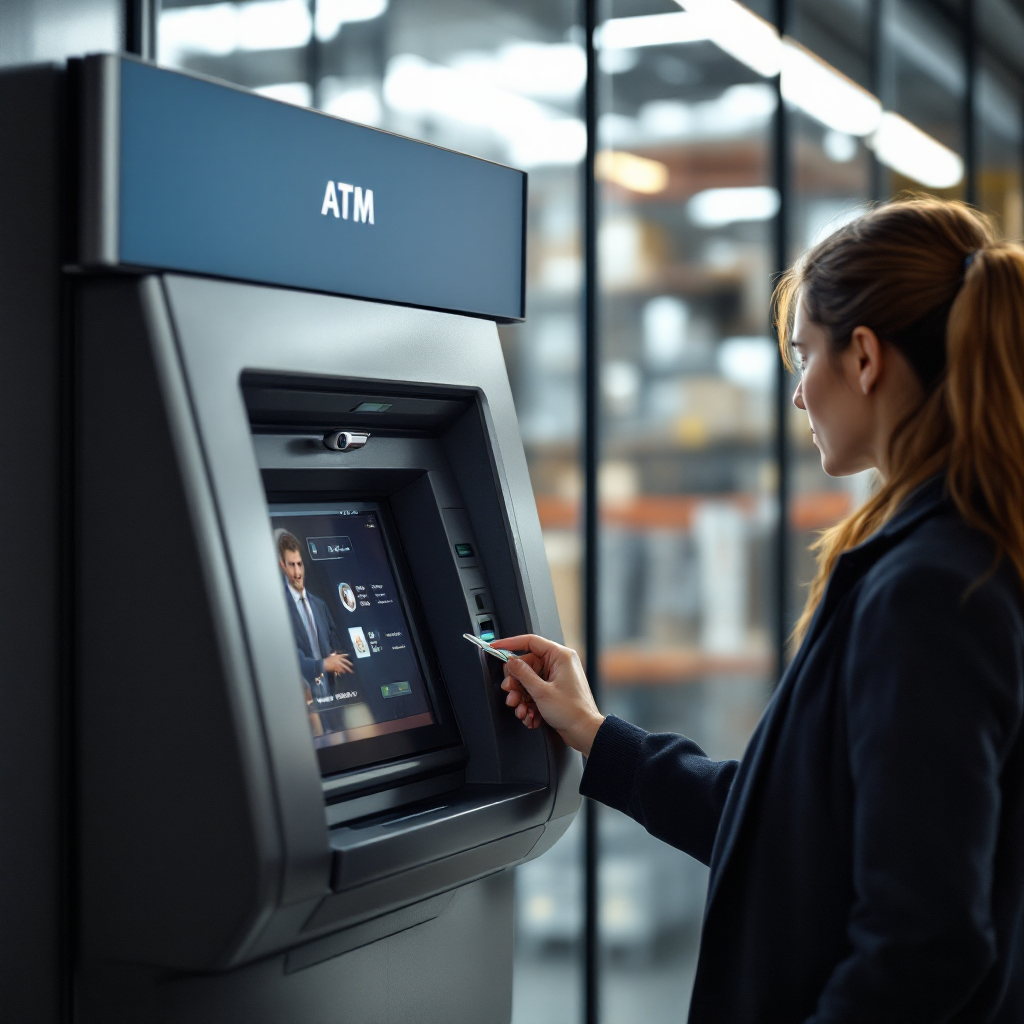ai in banking: transforming financial services
AI in banking now refers to a set of tools that combine sensing, prediction, and automation to improve safety and service. First, it uses cameras, sensors, and models to collect signals. Then, it applies machine learning and rule engines to convert signals into actions. This mix of capabilities includes computer vision, natural language processing, and data pipelines, and it is changing the banking sector by improving risk controls and customer channels. For example, banks expect AI to lift profitability and cut costs. A recent study reports that 93% of financial institutions expect AI to improve profits over the next five years, and this drives investment in surveillance and branch automation.
The impact touches security, operational efficiency, and customer experience at once. On security, modern systems spot suspicious activities faster than legacy alarm systems, and they reduce false positives so human teams can act where it matters. On efficiency, automated detection reduces routine monitoring, and staff focus moves to high-value tasks and customer-facing work. On service, banks use visual signals to manage queues and speed onboarding, and they measure interactions to improve customer satisfaction.
Banks that adopt these systems follow practical steps. They audit camera coverage, pick models that suit their bank premises, and set privacy rules in line with GDPR. Visionplatform.ai helps by turning existing CCTV into a sensor network that keeps data local and auditable, so banks keep control and meet compliance needs. For a deeper technical primer on visual models used in industry, see our resource on machine vision. By integrating tools with core operations, banks can transform how branches and ATMs operate, and they gain measurable ROI on safety and service improvements.
ai video: from surveillance to smart insights
Modern AI video systems go far beyond recording. They analyze live feeds, extract structured events, and stream those events into operations and security stacks. Unlike passive CCTV, these systems detect patterns and flag anomalies in real time. Cameras now perform detection at the edge, and servers run inference to create alerts that matter. The result is a move from reactive review to proactive intervention.

Intelligent cameras track people, vehicles, and objects, and they can ANPR vehicles for access control. This allows staff to see event streams, and it helps dashboards show staffing levels and foot traffic. For example, at ATMs a system can detect card-skimming attempts and loiter, and then trigger an audio cue or an alert to security. At drive-throughs, cameras can monitor lanes to reduce wait times and to improve queue management. A practical write-up of how video solutions make cameras smart explains how site-specific models reduce false alarms and improve detection accuracy (ai is making cameras smart).
AI video allows banks to monitor many remote kiosks from a central team, and it supports remote incident review when needed. The platform approach converts raw images and videos into events that feed business intelligence and performance metrics, and operators use that data to optimize staffing and process flows. Banks can use these insights to adjust branch hours, reroute staff, and improve customer flows. In short, AI video moves video from archive to active sensor, and it creates new operational value.
AI vision within minutes?
With our no-code platform you can just focus on your data, we’ll do the rest
analytics and computer vision: driving real-time threat detection
Analytics has evolved to support real-time threat detection at scale. Systems apply computer vision models and machine learning to each video stream, and they score behavior against expected patterns. These solutions use object detection, pose estimation, and temporal analysis to identify anomalies. When the system spots an unexpected pattern it issues an alert so operators can act quickly and decisively.
Pattern recognition flags anomalies like tailgating, tamper, or unauthorized access. For instance, when a person lingers near an ATM, the system raises an anomaly signal and records the event. This specific capability supports preventing fraud and reduces the window for theft. Banks use these alerts alongside transaction monitoring to give context, and that improves fraud detection overall. Visionplatform.ai supports this by enabling flexible model strategies on your data, which reduces false detections and keeps training local.
Machine learning algorithms power continuous improvement. Models learn from labeled footage, and teams retrain them to capture site-specific behavior. Such a loop helps to prevent drift and to keep detections accurate. Examples include loiter alerts that trigger lighting or a staff check, and card-skimming prevention where the camera flags a suspicious device and correlates that with ATM tamper sensors. The blending of visual and transaction signals creates actionable events that feed business processes and risk management. The result is faster incident handling, and improved safety and security for customers and staff.
ai video analytics: key features and compelling use cases
Key features include real-time alerts, facial recognition where permitted, motion detection, and object classification. A robust video analytics platform supports custom classes, and it streams structured events into security and operations tools. This allows banks to treat cameras as live sensors that inform dashboards, and that drive business intelligence and response automation.

Use cases span ATMs, lobby areas, and remote kiosks. At ATMs the platform helps in preventing fraud and in tamper detection, and it triggers alerts on suspicious activities. In lobby areas, banks can measure foot traffic and queue length to improve staffing levels and service. Remote kiosks benefit from central monitoring and multilingual incident handling. Many banks see clear ROI through reduced false alarms, and through higher staff productivity when routine checks get automated.
Besides safety, analytics drives operational gains. For example, event streams can automate report creation and support compliance audits. When banks use structured events they can automate escalation workflows and reduce time per incident. A single platform can thereby improve security and streamline customer onboarding, and it supports concierge-style services in premium branches. Vendors that let you run models on-prem and connect via MQTT let banks own their data, so they meet GDPR and privacy policy requirements while enabling banks to use video for both security and operations.
AI vision within minutes?
With our no-code platform you can just focus on your data, we’ll do the rest
future of ai, generative ai and ai in banking
The future of ai in banking will combine advanced AI with stronger governance. Strategic roadmaps set priorities: secure deployments, scalable inference, and transparent model auditing. Banks are moving toward hybrid inference so sensitive video stays on-prem while anonymized insights go to cloud analytics. This pattern supports EU AI Act readiness, and it helps banks align with regulators on data residency and explainability.
Generative AI adds new automation and summarization capabilities. For instance, models can draft incident reports, summarize event chains, and generate compliance-ready narratives from raw alerts. Research expects significant investment: spending on generative AI in finance could reach roughly $85 billion by 2030, and that will change how banks process visual and textual data (generative AI spend forecast). These systems also integrate with natural language processing and with visual pipelines to produce faster, human-like summaries that help investigators and operations teams.
At the same time, banks must manage risks. Studies note new threats from AI-generated misinformation, and regulators caution about stability risks from false narratives (AI-generated content raises bank-run risks). Therefore, banks plan for layered controls that combine automation and human review. Industry reports underline how many institutions still need to prepare: fewer than one in four banks are fully ready for the AI era (BCG: AI readiness). By integrating governance, banks can adopt advanced ai safely while they improve fraud detection and user journeys.
optimize business processes and enhance security
Banks can optimize teller workflows and compliance checks with visual automation. Cameras provide data that help shift staffing levels and to predict busy periods. For example, foot traffic feeds staffing rules, and queue management reduces wait times and improves customer satisfaction. When systems provide real-time insights, managers make faster scheduling decisions and they reduce service bottlenecks.
AI systems strengthen security in banking by correlating video events with transaction data and access logs. This integration helps to spot unauthorized transactions and to stop incidents sooner. A layered approach uses on-device models to keep sensitive footage local, and it streams structured events to central SIEM and BI tools. Visionplatform.ai supplies that bridge, so cameras act as sensors that feed business intelligence for both security and operations.
Privacy and ethics matter. Banks must publish a clear privacy policy and follow GDPR rules when they store or process images and videos. Banks must balance safety and customer trust by using anonymization, short retention, and auditable logs. Responsible deployment includes vendor controls, model explainability, and review processes. In practice, enabling banks to own their models and datasets reduces compliance risk and improves transparency. With proper governance, automation accelerates onboarding, helps preventing fraud, and supports security and compliance at scale.
FAQ
What is AI-powered video analytics for banking?
AI-powered video analytics refers to systems that use AI to monitor, analyze, and report on live video feeds. They extract events and alerts that security and operations teams can act on.
How do cameras detect suspicious activities at ATMs?
Cameras use computer vision models to track behavior patterns and to spot loiter, tamper, or unusual devices. When a preconfigured anomaly occurs, the system issues an alert for review.
Can these systems improve customer onboarding?
Yes. Visual signals speed identity checks and support verification steps during onboarding. They also automate parts of the document review and record events for compliance.
Do banks need to send video to the cloud?
No. Many deployments run inference on-prem or on edge devices to keep sensitive footage local. This helps with GDPR and with EU AI Act-aligned deployments.
What ROI can banks expect from AI video?
ROI comes from reduced false alarms, lower incident handling times, and efficiency gains in staffing. Banks often see improved customer satisfaction and measurable cost savings.
How does generative AI fit with video analytics?
Generative AI can summarize incidents, draft reports, and automate analyst workflows. It complements visual detections by turning event streams into readable narratives.
Are there privacy concerns with face recognition?
Yes. Face recognition has legal and ethical limits in many regions. Banks should adopt transparent policies, use opt-in where required, and apply anonymization when possible.
What is the role of machine learning algorithms in these systems?
Machine learning algorithms detect objects, classify actions, and adapt models to site-specific behavior. They support continuous improvement through retraining on labeled footage.
How do banks integrate video events into business processes?
Banks stream structured events into security tools and BI systems via MQTT or webhooks. This enables automated alerts, dashboards, and workflow triggers for operations teams.
Where can I learn more about machine vision and cameras?
Our site links practical resources on machine vision and AI cameras, including technical guides and deployment notes. For example, see our pages on AI camera, machine-vision in manufacturing, and Milestone Systems AI integration.

